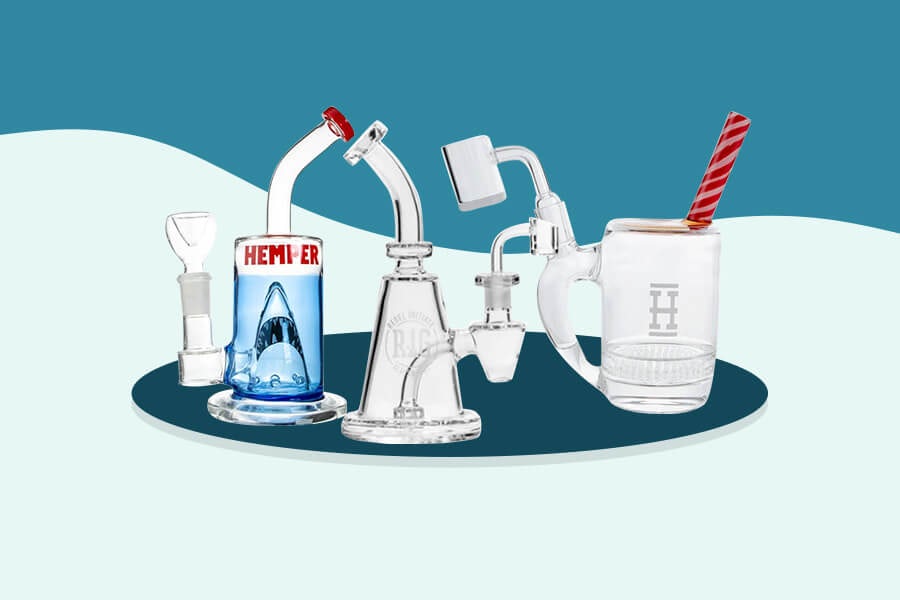Hydroponics isn’t a new gardening technique. In fact, some historians believe the Ancient Egyptians and Chinese knew all about hydroponic and irrigation techniques. 1 2
However, it’s only recently that more cannabis growers are switching from soil to hydroponics setups. While these soilless methods aren’t super forgiving, they have the potential to produce bigger yields in a shorter time.
Since hydroponics requires a steeper learning curve, new cultivators must carefully consider which strain to grow before experimenting with this growing method. Starting with the right hybrid could save you a lot of headaches as you’re growing your herbs hydroponically.
What are the best cannabis seeds for hydroponics?
Since hydroponics systems aren’t as forgiving as soil, it’s best to start with strains that have solid genetics. While there’s no particular hybrid that’s perfect for hydroponics, beginner-friendly cultivars tend to work well in these units.
In general, when shopping for hydroponics cannabis seeds, look for strains that have a relatively low difficulty. This simple strategy should increase your odds of success.
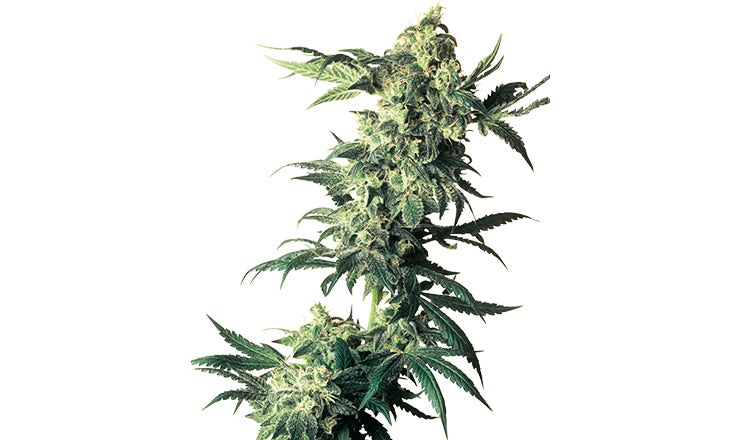
-
 Often categorized as indica
Often categorized as indica
-
 Height: 3.5 - 5 feet
Height: 3.5 - 5 feet
-
 Time: 8 - 9 weeks
Time: 8 - 9 weeks

-
 Often categorized as hybrid
Often categorized as hybrid
-
 Height: 6.5 - 8 feet
Height: 6.5 - 8 feet
-
 Time: 8 - 9 weeks
Time: 8 - 9 weeks
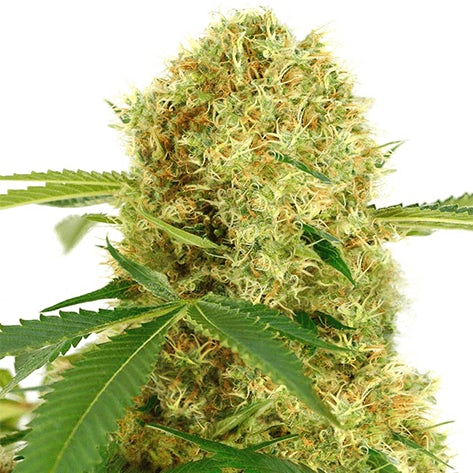
-
 Often categorized as hybrid
Often categorized as hybrid
-
 Height: ~ 2 feet
Height: ~ 2 feet
-
 Time: 8 - 9 weeks
Time: 8 - 9 weeks
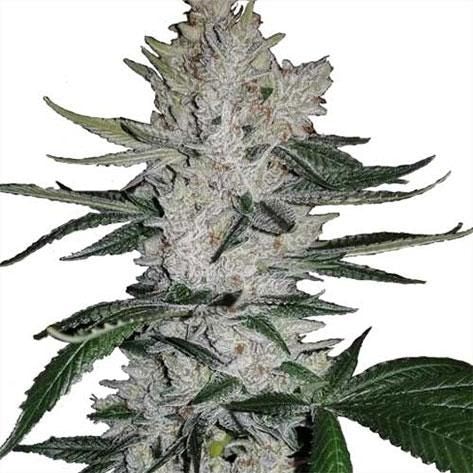
-
 Often categorized as hybrid
Often categorized as hybrid
-
 Height: 5 - 6 feet
Height: 5 - 6 feet
-
 Time: 9 weeks
Time: 9 weeks
Here’s a more in-depth look at the best cannabis seeds for hydroponics and what makes them unique.
Northern Lights
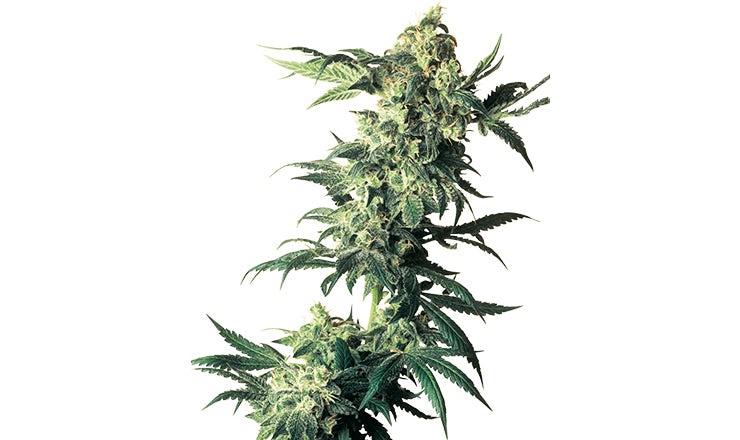
- Autoflower: No
- Often categorized as indica
- Feminized
- THC: 22%
- CBG: 1%
- Height: 3.5 – 5 feet
- Time: 8 – 9 weeks
- Caryophyllene, humulene , limonene, terpinolene
Northern Lights is every insomniac’s favorite indica. Not only is this earthy strain celebrated amongst medical cannabis patients, it’s an excellent choice for new cultivators.
Since Northern Lights is considered a full indica variety, it’s quite sturdy and doesn’t grow super tall. Within about 8 – 9 weeks, you should be ready to harvest these dense nugs from your hydroponic unit.
Blue Dream

- Autoflower: No
- Often categorized as hybrid
- Feminized
- THC: 19.2%
- CBD: 0.1%
- Height: 6.5 – 8 feet
- Time: 8 – 9 weeks
- Terpenes: Myrcene, beta-caryophyllene, and alpha-pinene
Blue Dream isn’t just a “dream” to toke; it’s pretty easy to cultivate. Indeed, a significant reason this Haze hybrid spread so rapidly has to do with its strong genetics.
As long as you’re comfortable with basic cannabis cultivation, it’s not too challenging to grow Blue Dream in a hydroponics unit. After about 8 – 9 weeks of cultivation, you’ll be rewarded with sweet, colorful nugs that have incredibly well-balanced effects.
The only downside of growing Blue Dream indoors is that it can get pretty tall. Ideally, you should know training techniques like LST to keep Blue Dream’s buds in check.
White Widow Autoflower

- Autoflower: Yes
- Often categorized as hybrid
- Feminized
- THC: 19%
- CBD: ≤ 1%
- Height: ~ 2 feet
- Time: 8 – 9 weeks
- Terpenes: Limonene, terpinolene, and beta-pinene
The original White Widow cultivar isn’t too tricky to grow, but using the autoflowering variety in a hydroponics unit is even easier. Since these strains flower without a change in light schedule, they don’t require as much skill as regular cannabis strains.
If you’re new to hydroponics, it’s best to go with well-reviewed auto strains like White Widow. Sure, the final result may not be as intense as the original, but this White Widow has plenty of pungency and head buzz effects. Plus, there’s a greater chance Auto White Widow will absorb a few minor mistakes.
Gorilla Glue #4
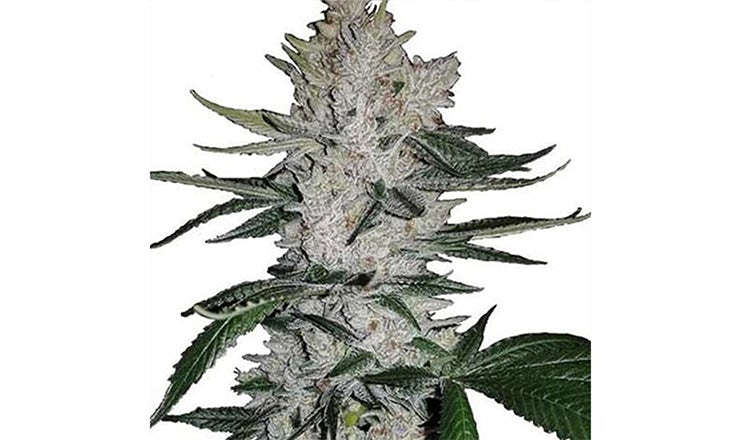
- Autoflower: No
- Often categorized as hybrid
- Feminized
- THC: 21.3%
- CBG: 0.5%
- Height: 5 – 6 feet
- Time: 9 weeks
- Terpenes: Beta-caryophyllene, limonene, and myrcene
Gorilla Glue #4 is one of a few award-winning strains that seem to perform better in hydroponics units. Arguably, this mainly has to do with GG4’s higher-than-average watering requirements.
Since hydroponics plants have direct access to water, there’s less risk of under or overwatering this flower. This easier access to water may also reduce GG4’s heightened risk for hermaphroditism.
Anyone who loves sedative indica hybrids with diesel and chocolate aromatics should add GG4 to their hydroponics plan.
What is growing marijuana in hydroponics?
The term hydroponic refers to cultivating plants without soil and literally means “water-working” coming from the Greek words “hydro” meaning water and “ponos” meaning labor. 3
There are many different hydroponics setups on the market, but none rely on soil as a grow medium. Instead, these systems use water, air bubbles, and store-bought nutrients to supply the cannabis plant’s roots with everything they need.
Some hydroponics systems also use pH-corrected inert mediums to stabilize roots. A few of the most commonly used inert products include clay pebbles, coco coir, and Rockwool. 4
Since the roots in hydroponics systems are exposed, they can absorb nutrients faster. On the positive side, this means plants will grow more quickly as they don’t have soil as a buffer. However, this lack of “buffer space” means there’s less room for error. 5
Here’s an overview of the most popular hydroponics systems for cannabis:
- Deep water culture: plant roots touch stagnant water in a bucket with an airstone for oxygen.
- Ebb and flow: water and nutrients from a reservoir push through containers with cannabis at pre-set intervals.
- Drip irrigation: nutrient-rich water “drips” into cannabis plants’ roots, which are suspended in containers with inert materials.
- Aeroponics: cannabis strains sit in chambers where they get sprayed with nutrient-rich mist at regular intervals.
How do you grow cannabis hydroponically?
Growing cannabis hydroponically is similar to using soil, but it requires more diligence on the part of the grower.
No matter which hydroponic system you use, it won’t hide mistakes as well as soil. Hydroponics growers have to be extra careful about factors like pH level, temperature, and nutrient feeding to ensure their girls grow nice and healthy. 6
Generally, hydroponics growers need to maintain a slightly acidic pH in the water at around 5.5 – 5.8. It’s also imperative for ambient temperature to remain between 73° F – 83° F and water temp to be at ~ 68° F. 7
Speaking of water, you’ll need to monitor the water for signs of algae. This is especially true if you’re using Deep Water Culture, since water in this system doesn’t constantly circulate. 8
When using hydroponics, it’s important to invest in macro and micronutrients for your flowers. Since plants can’t absorb as many nutrients from plain water, you’re going to have to add more to your reservoir at regular intervals.
Just be sure to avoid the temptation to overfeed your plants. Yes, hydroponics units need more nutrients, but it’s still better to underfeed rather than risk “nutrient burn.”
Do you need special cannabis seeds for hydroponics?
Some strains may perform better in hydroponics units, but there aren’t “special seeds” for hydroponics. You could grow any cannabis strain you like in any hydroponics setup.
The key determinant for success is your comfort in growing a chosen cannabis strain. If you have a lot of experience with a particular hybrid, chances are you’ll have an easier time adjusting to a new hydroponics system.
Should you grow cannabis with soil or hydroponics?
There are endless debates over the benefits and drawbacks of soil versus hydroponics. However, most cultivators agree that hydroponics has a higher learning curve. So, if you’re new to cultivating cannabis, it’s probably best to master your favorite strains in soil before dabbling with hydroponics.
While hydroponics usually rewards growers with faster and bigger yields, they require more attention to detail. Also, hydroponics are traditionally more expensive to maintain versus a DIY soil grow.
Of course, this doesn’t mean you can’t go straight into hydroponics if you want to take advantage of faster growing times. Just be sure to constantly monitor your grow room’s specs for a successful experience.
Is it worth the trouble to grow hydroponics cannabis seeds?
Hydroponics isn’t as simple as soil growing, but it’s the better option for indoor growers who want a greater ROI. Also, “control freak” cultivators often prefer adjusting variables like nutrients in hydroponics versus soil. If you’re interested in getting the biggest cannabis yields, it pays to learn more about hydroponics growing. While you could still get excellent yields with soil, hydroponics will always reward growers with the fastest and fattest flowers.
Sources
- Yannopoulos, S., Lyberatos, G., Theodossiou, N., Li, W., Valipour, M., Tamburrino, A., & Angelakis, A. (2015). Evolution of Water Lifting Devices (Pumps) over the Centuries Worldwide. Water, 7(12), 5031–5060. MDPI AG. Retrieved from http://dx.doi.org/10.3390/w7095031
- Janick, Jules. “Origins of Agriculture in Egypt.” Encyclopaedia of the History of Science, Technology, and Medicine in Non-Western Cultures, Springer Netherlands, 2016, pp. 3460–78, http://dx.doi.org/10.1007/978-94-007-7747-7_10237.
- Sambo, P., Nicoletto, C., Giro, A., Pii, Y., Valentinuzzi, F., Mimmo, T., Lugli, P., Orzes, G., Mazzetto, F., Astolfi, S., Terzano, R., & Cesco, S. (2019). Hydroponic Solutions for Soilless Production Systems: Issues and Opportunities in a Smart Agriculture Perspective. Frontiers in Plant Science. https://doi.org/10.3389/fpls.2019.00923
- Nemati, R., Fortin, J.-P., Craig, J., & Donald, S. (2021). Growing Mediums for Medical Cannabis Production in North America. Agronomy, 7, 1366. https://doi.org/10.3390/agronomy11071366
- Nguyen, N. T., McInturf, S. A., & Mendoza-Cózatl, D. G. (2016). Hydroponics: A Versatile System to Study Nutrient Allocation and Plant Responses to Nutrient Availability and Exposure to Toxic Elements. Journal of visualized experiments : JoVE, (113), 54317. https://doi.org/10.3791/54317
-
Effects of Low pH of Hydroponic Nutrient Solution on Plant Growth, Nutrient Uptake, and Root Rot Disease Incidence of Basil (Ocimum basilicum L.)HortScience
Authors: Daniel P. Gillespie, Chieri Kubota, and Sally A. Miller
DOI: https://doi.org/10.21273/HORTSCI14986-20 - Chandra, S., Lata, H., Khan, I. A., & Elsohly, M. A. (2011). Temperature response of photosynthesis in different drug and fiber varieties of Cannabis sativa L. Physiology and molecular biology of plants : an international journal of functional plant biology, 17(3), 297–303. https://doi.org/10.1007/s12298-011-0068-4
- Bawiec, A., Garbowski, T., Pawęska, K., & Pulikowski, K. (2019). Analysis of the Algae Growth Dynamics in the Hydroponic System with LEDs Nighttime Lighting Using the Laser Granulometry Method. Water, air, and soil pollution, 230(1), 17. https://doi.org/10.1007/s11270-018-4075-8
Sign up for bi-weekly updates, packed full of cannabis education, recipes, and tips. Your inbox will love it.

 Shop
Shop Support
Support




